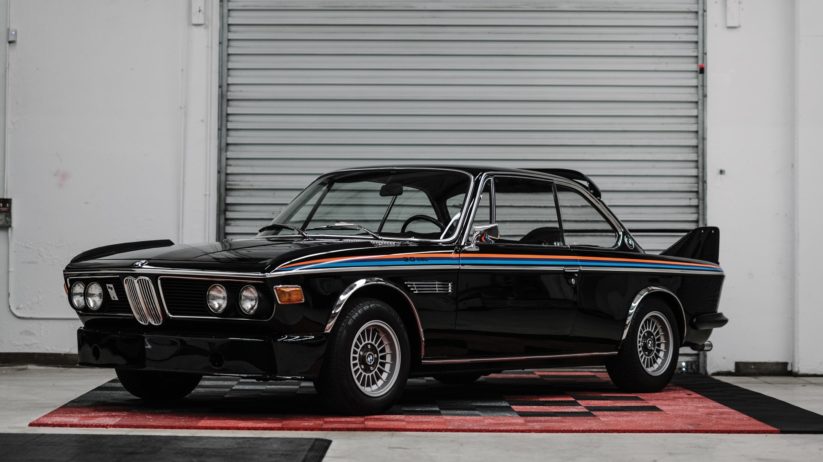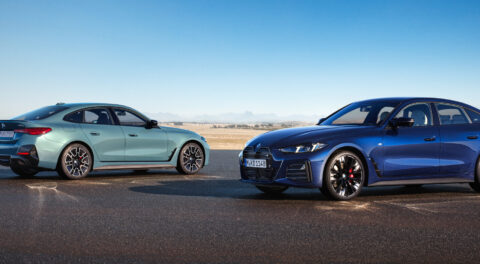Both August and Monterey Car Week are now behind us, which means we’ve had a chance to reflect on some of the noteworthy BMWs that changed hands during the perennial gathering of motor enthusiasts in Central California. This year’s auction results trailed previous outcomes in terms of overall value, but a minor reduction from 2018 didn’t seem to diminish the quality of metal crossing the blocks. Check out some of our favorite BMWs sold during Monterey Car Week 2019—and why they piqued our attention—below.

1972 BMW 3.0 CSL
Auctioned by RM Sotheby’s, this 1972 BMW E9 3.0 CSL demanded a hammer price of $131,600 including buyer’s fee, and is one of 169 first-series examples which all relied on carburetion for fuel delivery. First sold to an individual in Italy, during its decade of construction it was exported to the U.S. where it would spend subsequent years in the Atlanta, Georgia area. In 1986 it was acquired by a BMW collector with notoriety, and an in-depth restoration was embarked on in the early 1990s. During the revitalization, a replacement carbureted engined was installed, along with a five-speed manual transmission instead of the original four-speed. Parts were sourced from our friend Carl Nelson of La Independent BMW Service, and by the time the restoration was brought to completion in 1997, a detailed respray in black with tri-color M stripes had also been performed. Acquired by its current owner in March of 2014, more recent work has included the addition of some trademark later production CSL parts, most obviously the Batmobile-style trunk lid and wing.
Although not a numbers-matching example in its current form, the original trunk lid and factory engine block were included with the sale. Nonetheless, this E9 still fell on the lower end of the market spectrum for a CSL, a market that assigns the highest values to the most original, untouched examples. Restoration, different engine, and five-speed transmission aside, this black 3.0 CSL remains striking from every angle, and its clear that the rehabilitation process was a detailed affair with little expense spared.

2003 BMW Z8 Roadster
The Z8 has experienced a significant appreciation in terms of value over the past several years, with people seeming to just recently rediscover one of BMWs most compelling vehicle of the modern era. This example was auctioned by Bonhams, and was sold for a hammer price of $2o7,000 including the buyer’s premium. E39 M5 drivetrain and Henrik Fisker styling aside, this specific Z8 has accumulated fewer than 8,000 miles from new, and wears the rarest non-BMW Individual color, Stratus Grey, of which only 196 finished in. It’s Crema interior color makes it even more scarce, as it is just one of 46 to be build in such a combination. It is also equipped with the Performance Package, and in its seventeen years of life, the only major replacement was the convertible top, a task carried out by BMW to correct a defect in the stitching. At the same time the roof was replaced, sun visors without the DOT-mandated warning stickers were also installed. The factory hardtop was included with the sale, along with a host of other factory accessories.
Stratus Grey is one of the best BMW colors of all time, and it’s a rarely seen finish on the various other models it was available on, including the E38 7 series and E39 5 Series. Low mileage, a lifetime of garage storage, and one owner from new all combine with the rare color combination to make this an exceptionally desirable Z8, which is likely why it demanded a value on the higher side of the spectrum.
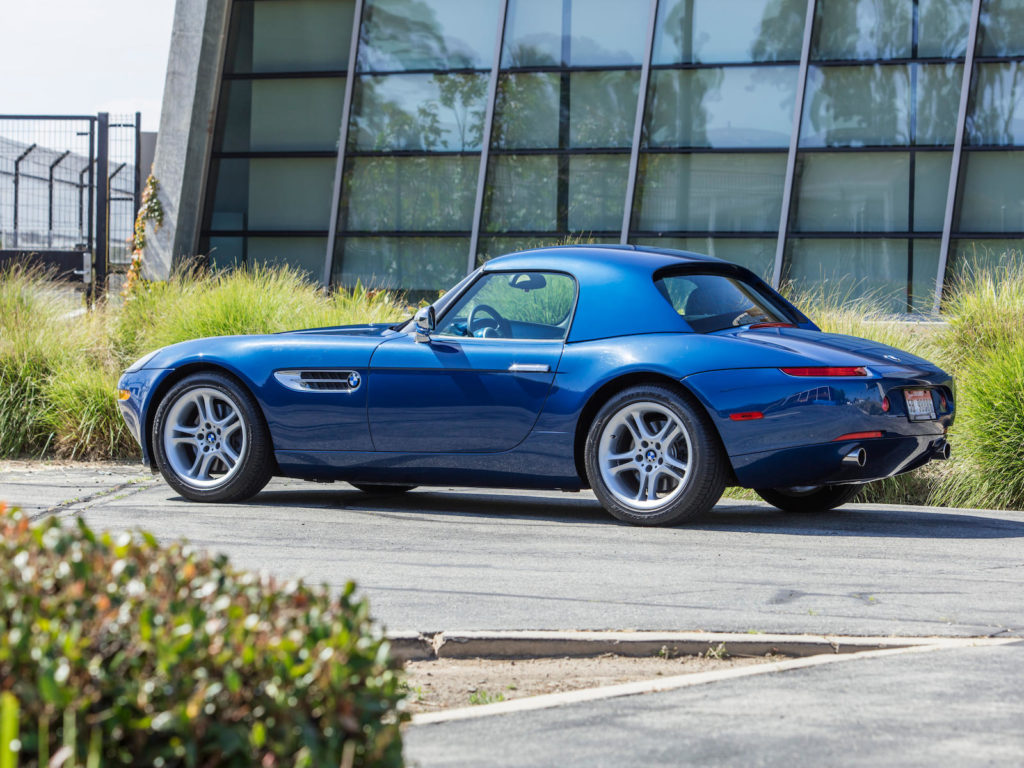
2001 BMW Z8 Roadster
The Z8 takes on a different appearance with the factory hardtop installed, but that’s not why this example caught our eye. Instead, it was the Topaz Blue paint, which makes it one of 319 Z8s finished in the color. Combine the finish with a black interior, and this Z8 is one of 135 built in the combination, another of which is owned and driven (heavily) by Roundel Editor-in-Chief Satch Carlson. However, while Carlson’s Z8 has been piloted across the country at least a few times now, this Topaz Blue Z8, auctioned by Bonhams, has fewer than 5,400 miles on its digital odometer. It sold for $190,400 including buyer’s premium, which earns it a spot among other Z8 Roadsters near the higher end of the market.
Looking beyond the 507-inspired aluminum bodywork, ultra-low mileage, and excellent condition, this Z8 is striking because it is just so rare to see one wearings its factory hardtop, especially in California. Although every Z8 was sold with a hardtop, the hand-built nature of the manufacturing process means that the metal roofs, which feature a large pane of glass in the rear, typically only fit properly on the specific chassis for which they were originally intended.

1981 BMW M1
With only 453 built from the late 1970s until 1981, the M1 is one of the rarest and most specialized BMW models ever produced, but the model doesn’t need much introduction here. M1s have been demanded some of the highest values for any BMW model in the brand’s repertoire for some time now, and this one is no exception, having been auctioned by Bonham’s in Monterey where it was met with a $390,000 hammer price including buyer’s premium. With its trademark Italian coachwork, which was penned by Giorgetto Giugiaro during his time at ItalDesign, this M1 stands out thanks to its blue paint color, which would make it one of just 59 road-going examples finished in the dark, almost purple tone, if original.
Restored to a painstaking level in the early 1990s, this M1 had accumulated over 70,000 miles by the time its second owner took possession in 1988, after it had already been federalized in Los Angeles some time earlier. In the time since, ownership tenure by just a few other individuals has elapsed, while more recent work included some minor paint correction and touch up, along with replacement of the tires and coolant pipes. Sold with a large file containing receipts, invoices, and other documentation, condition shows some evidence of use throughout the years, while overall fit and finish is sharp.
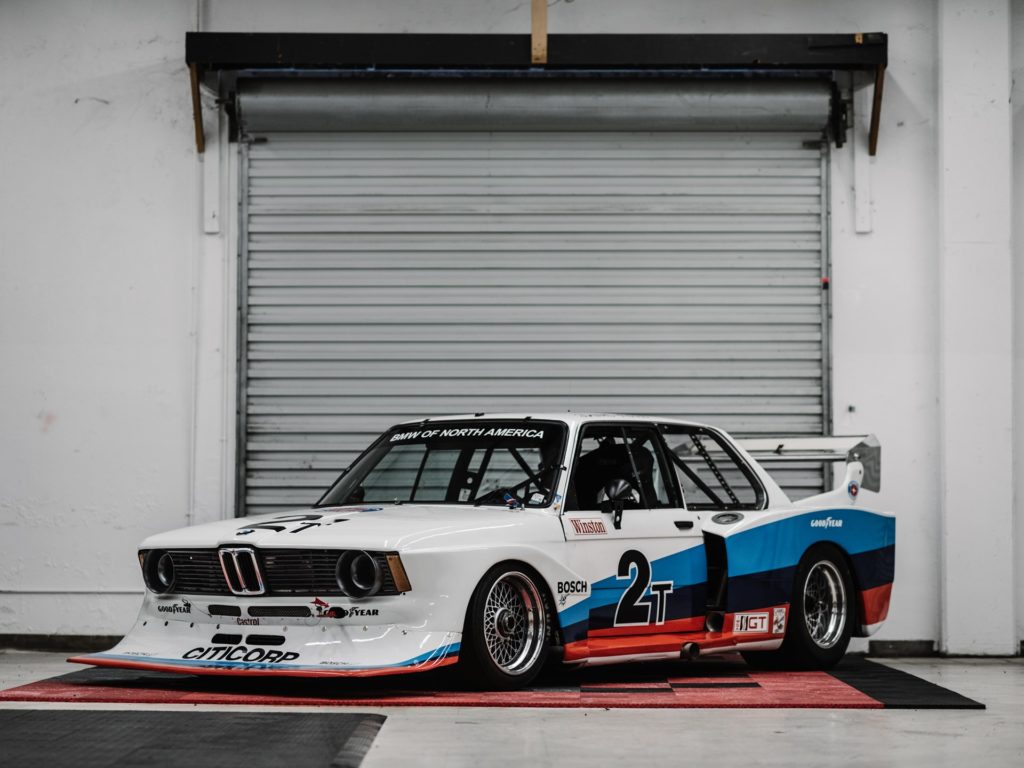
1978 BMW 320i IMSA
Any of the five BMW 320i Turbo race cars built in the late 1970s for IMSA competition are noteworthy, but this example, chassis 003, is the most compelling of all. Built after BMW unsuccessfully campaigned two earlier chassis in the 1977 season, this example is the only lightweight version built, meaning it saves over 300 pounds compared to its stablemates, thanks to the use of a single-piece front nacelle and various other changes to aero. More of a testbed than an actual fully-funded competitor, the 320i Turbo was a proving ground for early BMW turbocharging efforts, which were handled by McLaren Engines out of Livonia, Michigan. Chassis 003 was the first fitted with the M12/9 power plant, which developed approximately 600 horsepower out of just 1.5 liters.
In private ownership since BMW cancelled the 320i Turbo program to focus on Formula 1 with Brabham and a later development of the M12 engine, this 320i has passed through the hands of various owners, but was comprehensively refreshed for vintage competition around 2008. Campaigned in various motorsport events and revivals throughout its life with various magazine features to prove it, current condition is about as sharp as it comes for a race car, and it was sold for the staggering hammer price of $731,000 including buyer’s fee.
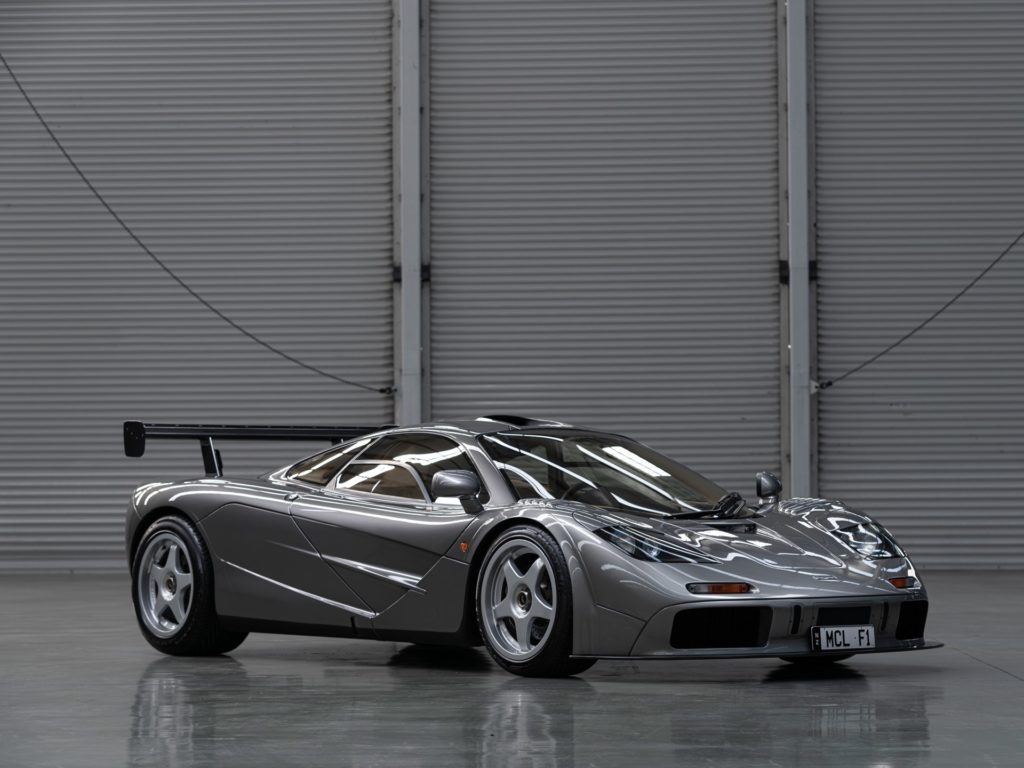
1994 McLaren F1 LM-Spec
No, it’s not a BMW, but it does have one of the best BMW engines ever designed. This 1994 McLaren F1 is one of only two examples modified by the factory to meet LM specifications, and it sold for an incredible $19,805,000 including buyer’s fee. It actually began life as one of 64 road-going cars of a total of 106 built, but the LM conversion was carried out in 2000, after the initial production run had come to an end in 1997. Compared with a conventional F1, the two F1 LMs built (chassis number 073 and this car, number 018) are differentiated by improved aerodynamics which lend a more aggressive appearance by way of the high downforce kit, and an unrestricted version of the BMW S70/3 V12 which produces 680 horsepower. Other changes carried out during the conversion in 2000 and subsequently in 2001 included the fitment of additional radiators, a modified exhaust, upgraded air conditioning, gas-discharge headlights, a radio added to the CD player and stereo, and a smaller version of the factory steering wheel. It was also given upgraded race-spec dampers, along with enlarged eighteen-inch GTR wheels wrapped in Michelin Pilot Sport rubber.
The interior is not the spartan and bare environment of an actual F1 GTR, but instead a nicely retrimmed space with cream leather highlighted by beige and brown alcantara and cream Wilton carpeting. The list of past owners is not particularly long, but the amount of work and level of preservation carried out by McLaren Special Operations (MSO) over the years points to an immaculately well-kept F1 which has accumulated the metric equivalent of just over 13,000 miles during its life. Expressed more succinctly, chassis 018 represents the pinnacle of road-going McLaren F1 performance, and the color isn’t bad either.—Alex Tock
[Photos via Bonhams, RM Sotheby’s.]

